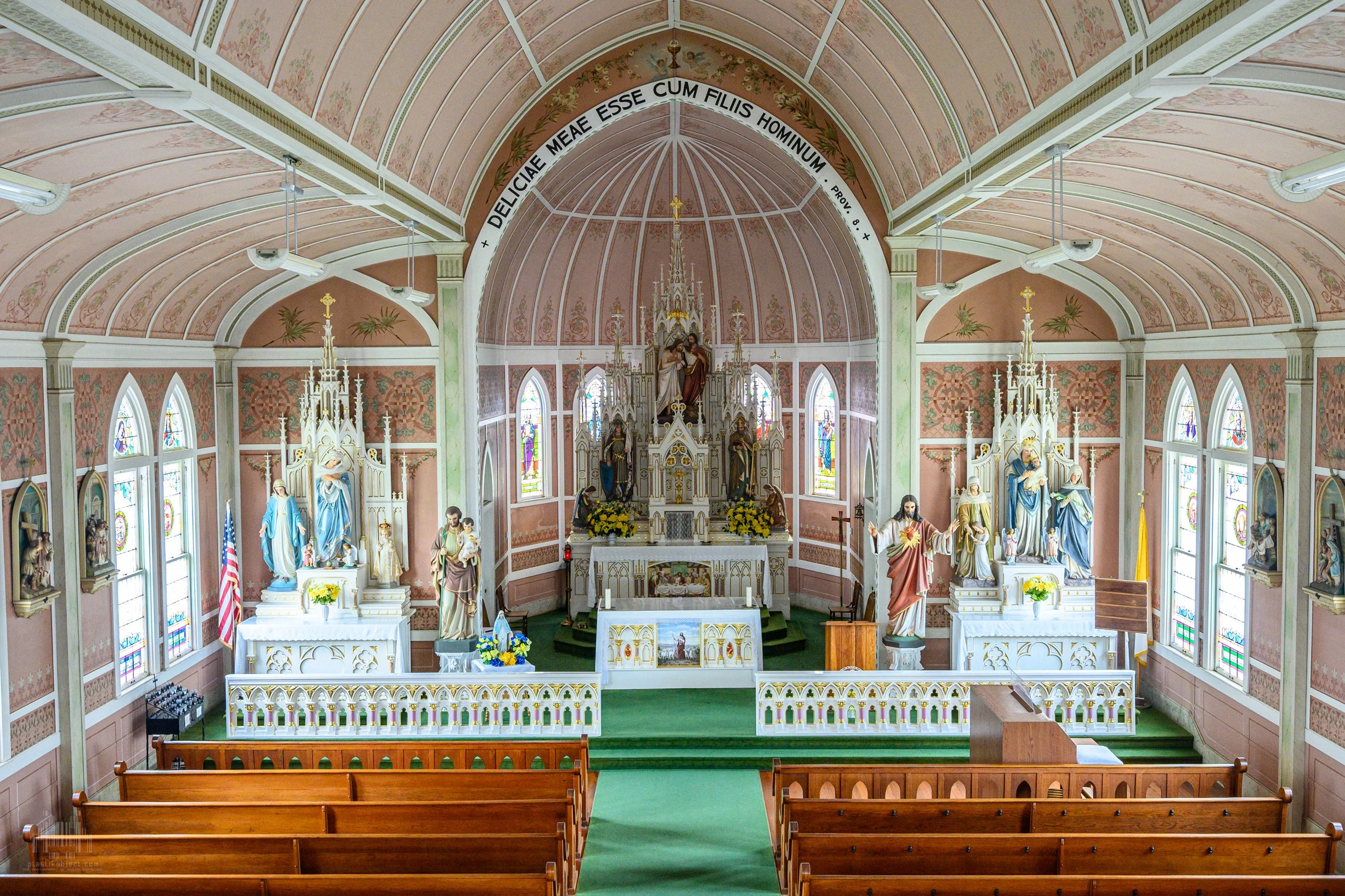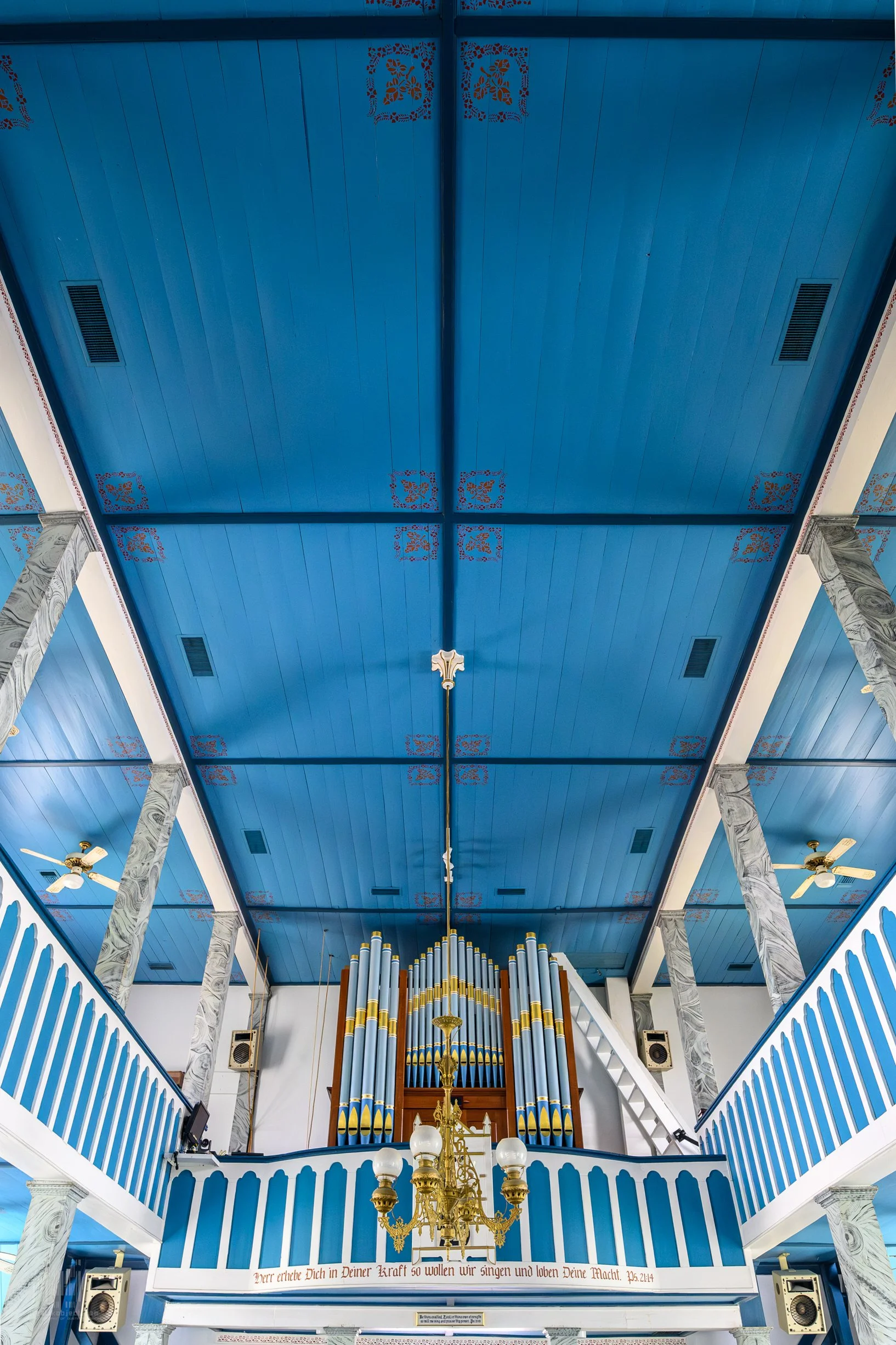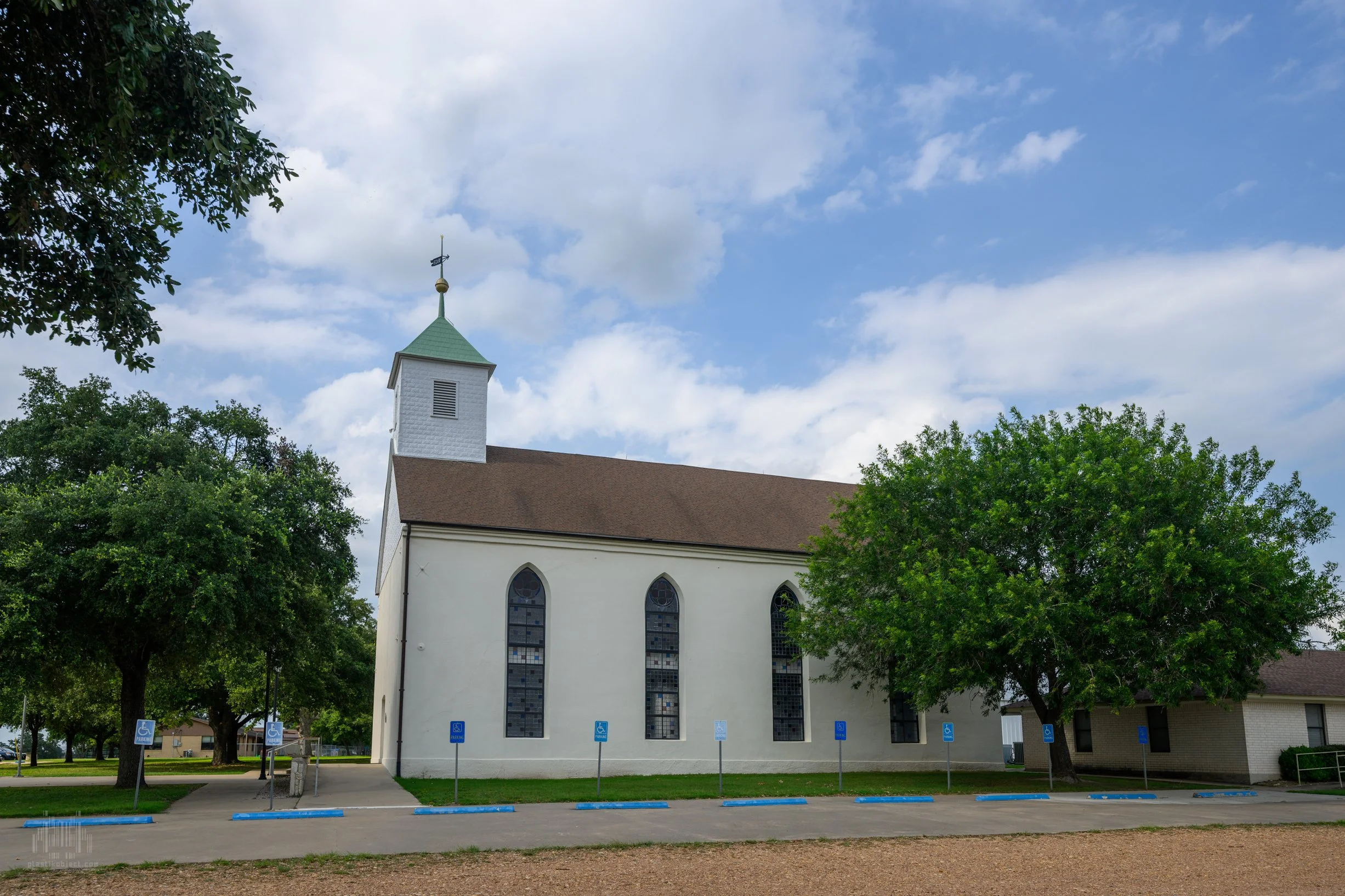Scattered across Central Texas, between San Antonio and Houston, lie a group of churches known for their richly decorated interiors, vibrant murals, and elaborate stenciling. These churches were built by 19th-century Czech and German immigrants who made Texas their home. In a few of these communities, the church is all that is left, as the surrounding community either got swept away by a hurricane or fire. Despite these adversities, the painted churches stand as a testament to their founders' faith, artistry, and resilience. Each church tells a unique story of its community, reflecting the cultural heritage and devotion of the immigrants who built them.
Ever since I was a young boy sitting in a doctor’s office waiting room flipping through an old Texas Highways magazine I’ve wanted to see the painted churches, but I stored them away and almost forgot about them. It wasn’t until 2020 that they came back into my life, but thanks to the pandemic, seeing them would have to wait till 2024. When you visit popular European churches or the Vatican you expect a level of opulence and grandeur, I was not expecting the same mouth-dropping feeling when walking through these small Central Texas churches. Even though I tried, photos will never do them justice. You have to see them with your own eyes to appreciate all the small details.
There are about 20 painted churches spread around Texas, with the majority being along I-10 between San Antonio and Houston. But if you are ever in Fredricksburg or Paris, Texas, you can check one out.
Up first:
Saint Cyril and Methodius Czech Church in Shiner, Texas
One of the churches that seems to be overlooked is Sts. Cyril and Methodius Catholic Church in Shiner, Texas. The church stands as a testament to the faith and craftsmanship of the Czech immigrant community that settled in the area. Founded in 1895, this church is one of the most notable painted churches in Texas, renowned for its stunning interior decorations and historical significance.
The first church building was a simple wooden structure that served the community's needs. However, as the congregation grew, so did the desire for a more substantial and beautiful place of worship. The current church building was constructed in 1921. Designed in the Romanesque Revival style, it features twin spires that can be seen from miles away, symbolizing the community's faith reaching towards the heavens.
Active today, Sts. Cyril and Methodius Catholic Church has always been more than just a place of worship; it is the heart of the Czech community in Shiner. The church hosts numerous religious and cultural events, including traditional Czech festivals, which help preserve the community's heritage.
St. John the Baptist Catholic Church, St. John, Texas
Another painted church that tends to get overlooked for the more lavish churches is St. John the Baptist Catholic Church in St. John, Texas. The parish was established in 1888, and the original church was a modest structure that served the needs of a growing community.
The current church building was constructed in 1909 after the original structure was deemed inadequate for the needs of the parish. The new church was built to reflect the grandeur and reverence of the community’s faith. The interior of St. John the Baptist Catholic Church is adorned with stunning murals and intricate stenciling. The vibrant artwork covers the walls and ceilings, depicting religious scenes, symbols, and decorative motifs that reflect the cultural heritage of the Czech community.
Today, St. John the Baptist Catholic Church remains an active parish within the Diocese of Victoria. The church continues to serve its congregation with regular services, sacraments, and community activities. It remains a spiritual home for its members and a symbol of the enduring faith of the community.
St. John the Baptist Catholic Church, Ammannsville
St. John the Baptist Catholic Church in Ammannsville, also known as the “Pink One”,tells a story of resilience. The original church, established by Czech immigrants in 1890, was destroyed by a hurricane in 1909. The current building, constructed in 1917, features a stunning interior with delicate stenciling and vibrant murals. The pale pink walls and the beautifully decorated altar create a serene and reverent atmosphere. Despite the trials faced by the community, including another destructive hurricane in 1935, St. John the Baptist Church continues to be a beacon of faith.
Saint Cyril and Methodius Church, Dubina, Texas
Staint. Cyril and Methodius Church in Dubina, Texas, is a testament to the craftsmanship of its builders. Originally founded in 1856 by Czech immigrants, the current church was constructed in 1912 after the first building was destroyed. The interior is richly decorated with intricate stenciling and hand-painted motifs in vibrant colors. The stunning ceiling…The Ceiling is ridiculous… adorned with stars and floral patterns, reflecting the artistic heritage of the Czech community. Dubina, which means "oak grove," remains a small, close-knit community with the church at its heart.
The original outhouses were located just across the lot from the church, and down the road is a one-lane iron trestle bridge that connects the communities of Dubina to High Hill. It’s named Piano Bridge for the twanging sound that’s made when crossing the bridge. Piano Bridge has seen the evolution of transportation from riding horseback to the horse-drawn carriage to Model T cars to modern vehicles.
St. Mary’s Catholic Church, High Hill, Texas
Here she is, the “Queen of the Painted Churches,” St. Mary’s Catholic Church in High Hill is renowned for its elaborate interior. Built in 1906 by German immigrants, this church is a masterpiece of religious art and architecture. These settlers brought with them a strong Catholic faith and a tradition of building beautiful churches that reflected their devotion and artistic heritage. I would hazard to say that this is the most ornate church in Texas. The interior is adorned with frescoes, hand-painted details, and stained-glass windows imported from Munich. The ceiling, painted to resemble a starry sky, and the meticulously crafted altar, highlight the community’s dedication to creating a sacred and beautiful space for worship. St. Mary’s in High Hill remains an active parish and a popular tourist destination.
There is an area roped off where the original paint and stucco remained before the church was updated.Over the years, the church has undergone several renovations and restorations to maintain its beauty and structural integrity. Each restoration effort has been carried out with great care to preserve the original artistry and craftsmanship.
The church is absolutely stunning and a must-see if you are in this part of the state.
St. Mary’s Catholic Church of the Assumption, Praha
St. Mary’s Catholic Church of the Assumption in Praha, Texas, is one of the oldest painted churches in the state. Established in 1855 by Czech immigrants, the current church building was completed in 1895. Seeking religious freedom and better economic opportunities, these settlers brought with them a deep Catholic faith and a sense of community. The interior features an array of vibrant murals and intricate stenciling that adorn the walls and ceilings. The artwork, with its deep blue and gold hues, depicts religious symbols and figures, offering a glimpse into the spiritual life of the community. St. Mary's stands as a symbol of endurance, having survived numerous natural disasters over the years.
St. Mary’s Catholic Church of the Assumption has always been a central part of the Praha community. It serves not only as a place of worship but also as a gathering place for social and cultural events. The church hosts numerous festivals and celebrations that preserve and promote the Czech heritage of the area.
St. Paul Lutheran Church, Serbin, Texas
No trip to the painted churches would be complete with out seeing the St. Paul Lutheran Church.
The church was founded in 1854 by Wendish, a Slavic people from Lusatia, an area that straddles modern-day Germany and Poland. Seeking religious freedom and economic opportunity, a group of about 500 Wends left Europe and arrived in Texas in 1854. These settlers established the community of Serbin, named after the Serbian-speaking Wendish people. They chose the area due to its agricultural potential and relative isolation, which allowed them to maintain their distinct cultural and religious practices.
The current church building was constructed in 1871-1872. Its wooden structure and simple yet beautiful design reflect the community's values. The interior of St. Paul Lutheran Church features a beautifully painted ceiling and walls, adorned with religious symbols and motifs. The craftsmanship reflects the skill and dedication of the Wendish community. The altar, pulpit (15 feet in the air), and pews are intricately designed, showcasing the artistic talents of the congregation.
The church established a school shortly after its founding, which became a center for education and cultural preservation for the Wendish community. The school taught religious education alongside standard subjects, ensuring the continuation of Wendish traditions.
St. Paul Lutheran Church has played a crucial role in preserving the Wendish language, traditions, and religious practices. The church services were initially conducted in German and Wendish, reflecting the linguistic heritage of the congregation. Over time, English was incorporated, but efforts to preserve the Wendish culture continue. Today, St. Paul Lutheran Church remains an active congregation within the Lutheran Church–Missouri Synod. It continues to serve as a spiritual and cultural center for descendants of the original Wendish settlers and the broader community.
All of these churches are open 8am to 5pm and can easily be seen in one day. There is about 15-20 minutes of driving between each one, but its through countryside with deep Czech, German and Wendish culture.
As they say on popular review sites: “10/10 would do it all again!”
















































































































































